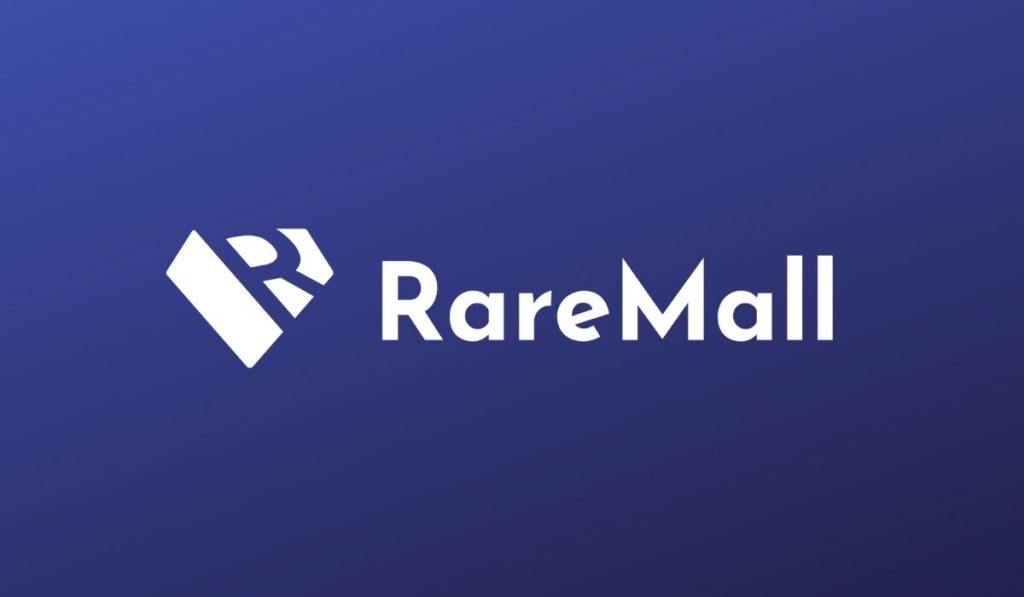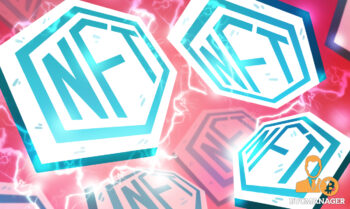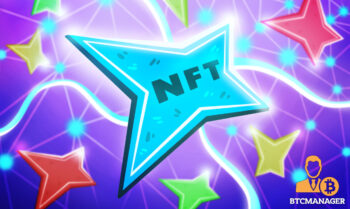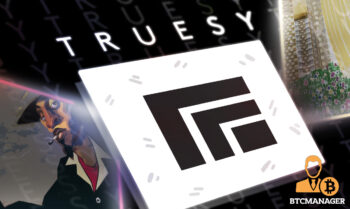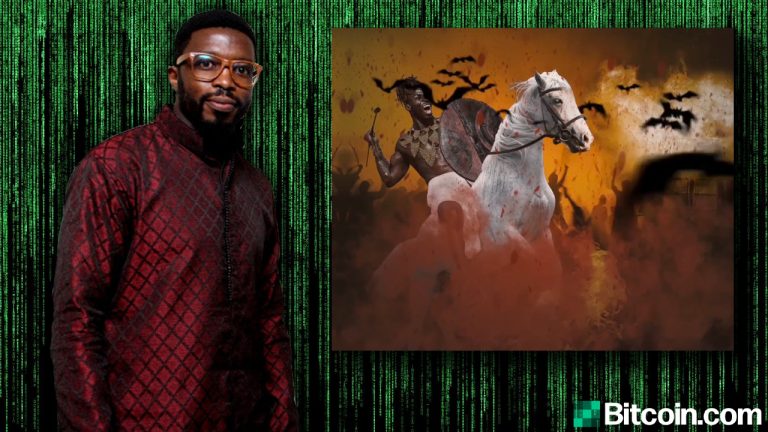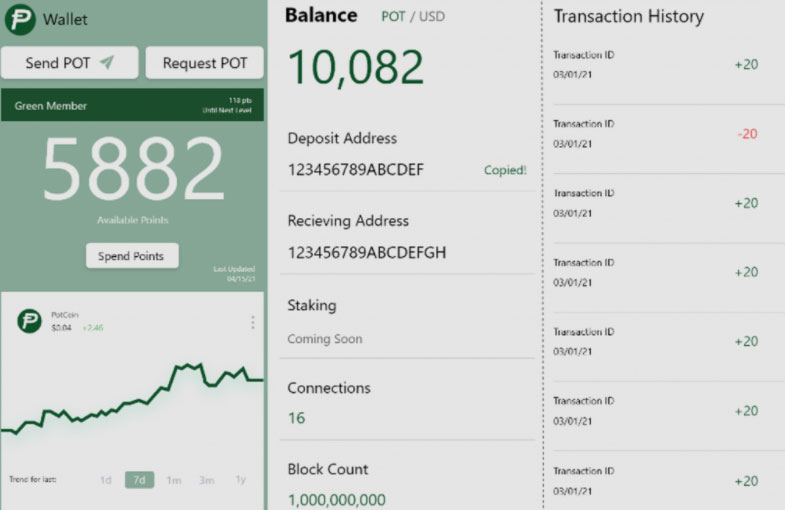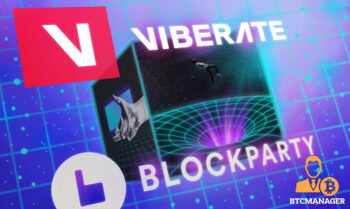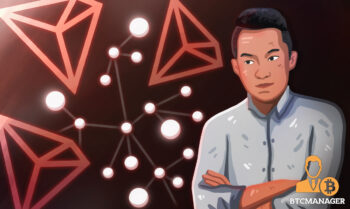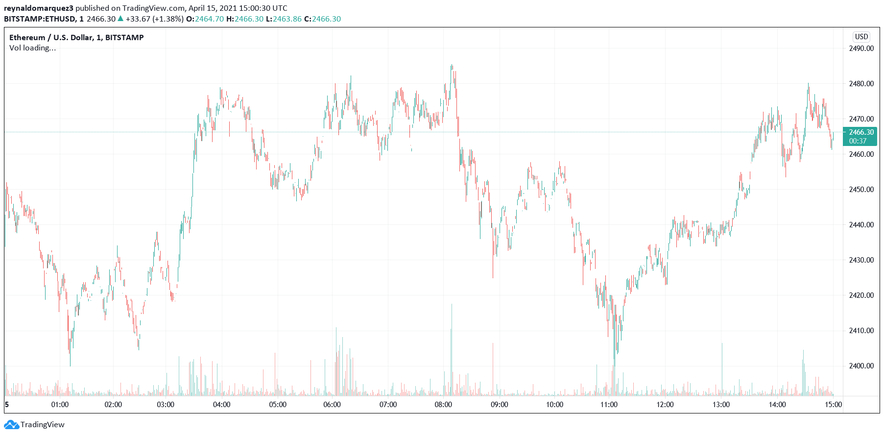2021-9-26 19:00 |
The NFT and digital assets investing sectors are in their early stages, but with the digital acceleration trend, a plethora of new platforms, investment opportunities, and innovation are underway.
As third-party NFT networks hit the mainstream, in-game monetization and tokenization will become more readily available to developers. Networks, such as Enjin coin (ENJ), create a limited supply of NFT tokens: every NFT token minted on the blockchain removes one ENJ coin from circulation – deflation provides liquidity and gives the NFTs a reserve of value. EOS, Tron, NEO, and Binance Smart Chain are further smart contract platforms that support NFT creation. Marketplaces such as OpenSea, Rarible and Nifty Gateway, among others, enable NFT trade. Riochain Network – aims to accelerate the mass adoption of digital assets by bridging traditional and decentralized finance. In 2018, Synthetix became the first platform to link blockchain to non-blockchain assets – solving the problem of blockchain isolationism. Synthetix is now the biggest derivatives protocol on Ethereum: the platform uses Linkchain (LINK) to connect two different infrastructures with third-party services that feed on-chain smart contracts with off-chain data. Tesla has been listed as a synthetic stock and can be traded on the permissionless, decentralized protocol.Republic, an online investment platform for early-stage startups and crypto, will be launching soon with a series of digital real estate funds. The first-ever investment company specializing in non-fungible tokens, NFT Investments, has announced plans to apply for admission of its Ordinary Shares for trading on the Aquis Stock Exchange Growth Market (AQSE) in London. It could be the first company that invests exclusively in non-fungible tokens to join the stock market. Online investment platform for early-stage startups and crypto, Republic, launched with a series of digital real estate funds.
Head of real estate at Republic, Janine Yorio, told Al Jazeera that “it has become apparent that retail investors have grown tired of operating within a financial system that favors the ultra-wealthy”.
“This pride of ownership is nothing new,” said Yorio. “In fact, owning land has always been the American dream. Now, this phenomenon is just playing out virtually.”
As new platforms for NFT trading and investing continue to emerge, the market is set to gradually evolve from niche to mainstream.
Four years ago, the head of JP Morgan, Jamie Dimon, infamously called Bitcoin “worse than tulip bulbs”.
He contended that “it’s just not a real thing, eventually it will be closed”. Fast forward to today, and JP Morgan executives are looking at how cryptocurrencies may be an alternative to gold assets for hedging against inflation.
Many institutional investors followed a similar pattern, originally being skeptical of cryptocurrencies before many jumped in. NFTs are now in a similar place to where cryptocurrencies were a couple of years back – the opportunity has not yet been seized in the mainstream.
Nigel Green, the CEO of one of the world’s largest financial advisory and fintech organizations, deVere Group, described NFTs as firmly positioned as a tech investment trend of the next decade:
“Some traditionalist commentators have dismissed NFTs as a fad and/or a bubble about to burst. I would suggest that these would have been the people, including some tech experts, to have also dismissed the internet in the 1990s and the likes of Amazon in the 2000s as ‘hype’.
“The bottom line is that millennials and Gen Z especially have digital lives and it’s natural to want to take digital representations of luxury brands, music, and art into these worlds – and now they can – and this has value,” he told citiesabc.
“I wouldn’t be doing this if I didn’t think this was literally the next phase of the internet. Everything that touches ownership is going to be affected by what’s happening here. Art and music and everything that has a digital life is going to be touched by this. Anything that you thought was digital, that you thought you owned but didn’t really own – that’s what’s about to be revolutionized.” – CEO of Gala Games and co-founder of MySpace – Eric Schiermeyer
In the stock market, once an opportunity becomes clear, institutional money pours in. It’s hard for individual investors to have access to the same opportunities as institutional investors.
However, NFT investing has changed the underlying economics, creating space for the individual to leverage cultural and tech trends and break into the nascent NFT and digital land investing market.
Comparing traditional and digital land investingTo better understand the opportunities of investing in digital land assets through NFTs, we’ll compare digital land to traditional land investing.
NFTs eliminate mediators and save time and moneyA key feature of blockchain innovation is that it eliminates mediators and the additional time and costs that they involve.
Digital land NFTs can be managed by smart contracts; a program that runs on the blockchain, can receive and send transactions and is immutable. A smart contract automatically executes and completes tasks within the preset terms of the contract.
Smart contracts provide ease of use. It is possible to make a trustless agreement and automatically release the NFT from seller to buyer after the funds are deposited.
By comparison, traditional land requires a significant investment of time and effort, and contracts are typically signed by multiple intermediaries. With physical assets, specialists are usually needed to determine the worth, value, and condition of the asset.
Digital assets can be swiftly bought and sold – no visits to investigate the quality and site of a physical asset are necessary and the cost of purchase is reduced to a tiny fraction of a traditional land investment.
The originality of the digital asset is encoded in the NFT and buyer/seller interactions are handled automatically by a blockchain-based smart contract. Lengthy title searches and property history checks are replaced with quick transactions.
Trading assets through smart contract-based NFTs offers so many upsides, it’s likely the sector will evolve in the future to enable purchases of physical land and real estate.
This would reduce costs and make it easier to issue title insurance for banks and all parties involved in the transaction. But for now, digital land investments are uniquely positioned to benefit from the key perks of investing and transacting on the blockchain.
LiquidityLiquidity measures how easy it is to convert an asset into cash.
Land and real estate are often large, illiquid investments. They require a substantial amount of funds to buy and are relatively illiquid.
You cannot cash in your investment wherever and whenever you want. There are many restrictions, permissions, and challenges that you could face as you develop or sell the land and it could take years to sell land or property.
Being digital assets, NFTs are much easier to trade and convert to cash compared to traditional land and real estate assets.
They can also be minted – created – on one platform and then traded across multiple markets. This creates more possibilities for potential buyers from across international markets than what is feasible with traditional assets.
And as the NFT investing market matures and develops, opportunities to borrow against your digital land asset are likely to emerge. Digital asset securities are in the early stages, but there are already options for using them as collateral.
While at first only cryptocurrencies like Ethereum could serve as security for a loan, digital assets including NFTs for art, collectibles, and domain names are now being included as collateral-worthy assets.
The inclusion of digital assets as collateral means that as the NFT and DeFi sectors continue to evolve and mature, digital asset liquidity will expand with time.
No Maintenance CostsThe upkeep and maintenance of traditional land and real estate can be expensive; you will be obligated to pay property taxes and other expenses.
You may have to pay to maintain the land or property, such as by regularly mowing the lawn or cleaning and repairing the property. If left undeveloped, the quality of the site will deteriorate, wildlife will take over and environmental problems such as flooding or leakage could occur.
In addition, land alone does not generate an income. Developing the land to a point where it generates income could be costly and risky as an investment. For these reasons, it can be very challenging to get a loan on vacant land; there’s a good chance you’ll have to pay upfront, tying up significant funds in the investment.
Digital assets, on the other hand, require no upkeep and maintenance costs. You can choose whether to hold on to your asset as its value increases over time with the growth of the digital platform or to sell or develop your digital asset to generate revenue without additional costs and fees.
Phergyson, an avid digital land trader who proudly calls herself a ‘fake estate magnet’, says owning digital land is “definitely” easier than owning real estate. There are “no closing costs or recurring costs for taxes and repairs. And most importantly, no plumbing”.
Her first Decentraland purchase was an impulse buy: “I just saw Decentraland (MANA) available on Coinbase and looked into it. I’m pretty sure I bought my first parcel the first time I logged into the game. I just bought the second cheapest one available. It worked out really well for me because MANA was still at $0.08 when I joined, so my first parcel was only $750.
“I was planning to just hold it for a few years to see what happened, but I listed it for sale just in case and it sold really quickly for a really good profit, so I just kept doing it.”
Traditional land utilityThe government may restrict the use of a land asset, with rules for the type of property or ways in which the land can be developed.
If you’re buying the land for residential or commercial development, you’ll need to first check that the land has all the necessary permissions and check the regulation around conversion.
There may be instances where restrictions on land use could limit the ways in which the owner can use the land. Whether it’s vegetable farming, recreational purposes, or the development of the real estate, obtaining permits and documents is often a lengthy process.
The availability of utilities could also impact development opportunities. How easy is it to set up a sewage system, running water, electricity, gas, telephone, cable, and internet?
Depending on the location of your land, gaining access to necessary utilities could be expensive and restrict potential development.
Digital land utilityDigital land, however, offers multiple opportunities to monetize the investment which are not present in traditional land, monetization also requires less investment and is potentially less restrictive.
As with traditional land, the value of virtual land is based on where it is located, how much digital traffic it attracts, and how owners choose to develop the land.
Let’s take a look at the fastest growing NFT game on the current market, Decentraland, as an example of the revenue-generating opportunities available to digital land investors.
According to Republic, popular developments within Decentraland include:
Art galleries where owners can sell their digital NFT art, Cryptokitties, and other NFT collectiblesCasinos, where players can win MANA – the cryptocurrency that facilitates the purchase of digital land.Game sitesBrand-sponsored content, such as the Atari arcade which features games that can be played in DecentralandMusic venues where musicians can play music and hold concertsDigital land can also be rented out, enabling owners to generate cash flow and income from tenants or other utilities.
As an example, Alien Worlds – one of the largest digital land NFT games in the world which runs in partnership with Binance – enables players to generate real revenue by allowing other players to come and mine from your plot.
These are just a few examples of the monetization possibilities for digital land. As more games and platforms emerge with digital land NFTs, the sky’s the limit for the type of virtual revenue that landowners could pursue.
Virtual land enables the buyer to easily develop and pursue multiple revenue-generating opportunities that they genuinely enjoy. In the virtual world, the property can be built in an instant, removing any and all barriers associated with distance, time, and space in traditional investing.
Borderless, international ease of accessAs in real life, virtual real estate is about location, location, location. In both traditional and digital land, the value is heavily influenced by location and how much traffic the area attracts.
With physical assets, a multitude of factors influences the location and traffic that are fully out of the buyer’s control.
How far or close an airport is, whether or not it has significant landmarks that attract international users and visitors, ease of access, infrastructure, regulations for international travel, and unexpected global events such as the Covid pandemic, can all play a role.
In virtual platforms, people can instantly visit from all over the world with their avatars. Virtual conventions, where participants can gather to watch a real-world sports event, network, or pitch ideas to investors in Crypto Valley – can all attract a crowd and drive traffic to your location, increasing its value at little to no extra cost.
Annual percentage yield and ROIRevenue growth for video games is forecast to soar from over $159.3 billion in 2020 to $189.3 billion in 2021. And from 2020 to 2027, the global industry is set for a Compound Annual Growth Rate (CAGR) of 12.9%.
And as more people and brands enter the metaverse to enjoy a unique, borderless experience and advertise to users, the value of digital land assets will continue to climb.
Contrast this with years spent obtaining planning permissions and developing traditional land investments, and it’s clear where the potential for higher Annual Percentage Yields (APYs) and ROI lies.
In 2018, Decentraland hit the headlines when digital land investors’ profits soared to 500%. The decentralized virtual world has continued to gain traction since: digital land that sold in early 2019 in Decentraland for $500 is now trading at over $7,860 – that’s an ROI of 1,572%.
The Decentraland cryptocurrency, MANA, jumped in 2021 and has been on a bullish cycle for over a year. Decentraland is one of the most popular multiplayer games in the world, and the fastest-growing blockchain, NFT, and digital land-based virtual world.
As more players grow in the gaming ecosystem, the value of the digital asset increases. Scarce supply and exponentially growing demand can drive prices very high.
Youtuber LiteLiger shared some examples of digital land NFT investments that have dramatically increased in value over the course of just a few months:
The Sandbox is an Ethereum-based game backed by institutional investors.
LiteLiger purchased a parcel of Sandbox land for $100:
Eight months later, LiteLiger received buy offers of $650 for his Sandbox land parcels:
In late December 2020, Liteliger purchased digital land in Alien Worlds for $331:
Three months later, in March 2021, he sold his Alien World’s land parcels for $1,261
Just one month later, in April 2021, similar Alien World land plots sold for almost $9,000:
These phenomenal digital land price hikes show the potential valuation increase for digital land NFTs where the buyer purchases the land in the early stages of game development and release before it gains more significant market traction.
Where you have a fixed amount of land on one of these platforms and it eventually attracts thousands if not millions of users, there’s potential to make enormous returns; the value of your digital land assets can only increase as network effects, users, and brand dominance grows.
Traffic: where attention goes, money flows
Since 2015, the number of people actively playing video games has seen a steady 5.6% year-on-year (YoY) increase. By the end of 2020, there were 2.69 billion gamers. 2021 is forecast to see this number grow to 2.81 billion gamers in a market where nearly two out of every five people worldwide are gamers.
Some of the same principles apply to both digital and traditional land investing: property in highly populated cities costs more than in rural areas – more traffic translates into better business opportunities.
The same principles apply to digital land: successful real estate investing involves positioning yourself to get traffic – but the beauty of the digital world is that space evolves and grows significantly faster than it does with traditional real estate.
With a steady 5.6% YoY increase in the number of gamers worldwide and an industry that is fast-evolving, borderless, and accessible to everyone at the click of a button, the possibilities for driving more traffic to your digital land site are far higher and more easily achieved compared to what it would take to increase traffic to, and thus the value of traditional land.
And just as we saw with Airbnb, Facebook, and Twitter, virtual metaverses with an ever-growing user base have limitless monetization potential. Companies can use innovative methods within a fun and fantastical virtual metaverse to promote their products and services.
As the social media giants, the financial possibilities for virtual worlds that enable users to create, own, trade, and sell their own content and interactive venues are robust, with exponential growth potential.
And thanks to their Generation Z appeal, virtual metaverses are set to continue to attract an influx of traffic in coming years: Gen Z will soon surpass millennials as the most populous generation on earth.
As the first fully digitally native generation, Gen Zers are tech-dependent, prefer experiencing new adventures over just buying stuff, and are at home with digital interaction, according to a Deloitte report.
Tips for investing in digital landThe value of the gaming industry surpasses both music and movies combined. And with NFT’s biggest application being in the world of gaming, digital land NFTs offers a significant investment opportunity.
Early adopters stand to benefit from all the incoming trading that takes place in the metaverse. But as with any investment, there’s no guarantee that your digital asset will perform well and generate considerable ROI.
So what are the key properties of high-growth digital land NFTs? And what are the indicators that the virtual platform is set for growth? Although there’s a lot of money to be made in the NFT space, investors should understand the value drivers for an asset class before making an allocation.
How to capture NFTs that will be hot in the future and store value over the long term Will it capture network effects?In the future, how many people will be interested in the NFT? What’s the most expensive NFT the game has sold so far? How many active monthly users are there?
The successful digital metaverses will capture network effects. Will there be a high level of community involvement in the mode of distribution?
Engagement LevelsHow well does the game capture user engagement and would you enjoy playing this game for hours consistently? The more loyal and engaged the circle, the more likely it is to attract more smart money and users from outside the circle.
Utility – what will this NFT actually be able to do?The more compelling the content is for users to engage with, the more valuable the metaverse becomes. This attracts more users, which increases the value of the NFT and attracts more interest from advertisers and sponsorships.
Guaranteed scarcity of the digital land assetAttractive digital land involves the rarity of design and guarantee scarcity. Does the open value economy in the game function well? Do the NFTs create unique and differentiated value for the users? How easy is it to trade and cash out in-game tokens for real-world currency?
As more players grow in a gaming ecosystem, the value of the digital asset increases: scarce supply and exponentially growing demand can drive prices very high.
Team – experience, skill and track recordHow skilled is the team that’s building this game? Who are the video game creators, and what previous success have they had?
Brand ValueHow well-known and liked is the brand? Are its digital assets interchangeable with third-party games and platforms?
Market traction and player growthHas it been mentioned in any bigger publications? Is it gaining traction? Online multiplayer games that leverage the network effect can drive player growth and become a vital competitive advantage.
A user’s decision to use a platform is often based on the number of other users and applications on the platform: incentives like in-game economics can also help tip the scale.
Prolific Decentraland digital land investor Phergyson advises to “do a little research before just buying it. Even if it’s the cheaper parcel on the map, it still might not be a very good deal. The problem is a lot of people get on here expecting to 10X or 100X their investment, so it doesn’t seem like it matters to them if they pay a bit more. That’s one of the reasons there’s so much money to be made in Decentraland.
“Once you get an idea of what land parcels are worth, it’s pretty easy to buy low and sell at market prices, or a little lower, and still make a great profit. I average about 20% over close to 200 sales.”
If you’re interested in learning about upcoming digital land sales, NFT Plazas and play to earn are two good news sources for keeping track of the latest developments in the digital land NFT market.
Capitalizing on early mover market advantageEarly mover developers are now moving in to get a headstart in the NFT and digital investing gaming revolution.
The convergence of technological innovation, the steady growth projections for video gamers worldwide and industry revenue, and a cultural shift in the way we understand and deploy ownership and investment will positively change business models.
And as the younger “digital native” demographic who have grown up in an ever more connected virtual world gain spending power, this will further drive demand for tech-oriented digital investments.
The involvement of major gaming brands such as Atari, Microsoft and Sony is ample evidence that NFTs in video games are here for the long haul.
While many Triple-A-Games have yet to capitalize on the NFT disruption trend, the whole gaming industry is toying with the question of how to implement NFTs into their platforms after early movers have proven the concept works. The digital land NFT market lies at the threshold of significant global growth over the next decade.
There’s a real demand for ownership, investment, and trade of in-game assets. It’s possible to build wealth through real estate at a fraction of what it used to cost; the unfair advantages are available to the individual, low-key investors based anywhere in the world.
And unlike traditional real estate investment where the value of land may increase over many years as the area is developed, early movers in the NFT digital land investment space are likely to see their assets rapidly accelerate in value.
A virtual metaverse opens up new worlds of possibility where it’s easier to drive traffic, develop your own community, increase your income, or just hold and see faster returns on investment.
Yield AppJan Strandberg is the Chief Growth Officer and co-founder of the digital wealth management platform Yield App.
He has leveraged his passion for digital assets and decentralized finance to drive the success of Yield App, which reached $400 million of managed assets within six months of its public launch in February 2021.
Prior to joining the company, Jan was the Head of Marketing at crypto company Paxful, where he worked for over four years after joining as only its fourth member.
During his time there he oversaw the growth of the customer base from 50,000 users to more than 4.5 million, and expansion of weekly revenues from US $100,000 to over $44 million as he managed a team of more than 45 people and established offices around the world.
A well-rounded online marketing professional, Jan specializes in SEO, SEM, and content marketing and uses creative analytics, research, and cutting-edge strategies to drive results – turning impressions into visitors, visitors into leads, leads into customers, and customers into advocates.
Also read:The Rise of Digital Land and NFT Investing
How NFTS Impact User-Generated Economies of Scale
The post Digital Acceleration— The Early Stage, High-Growth NFT Market appeared first on BeInCrypto.
origin »Digital Rupees (DRS) íà Currencies.ru
|
|
